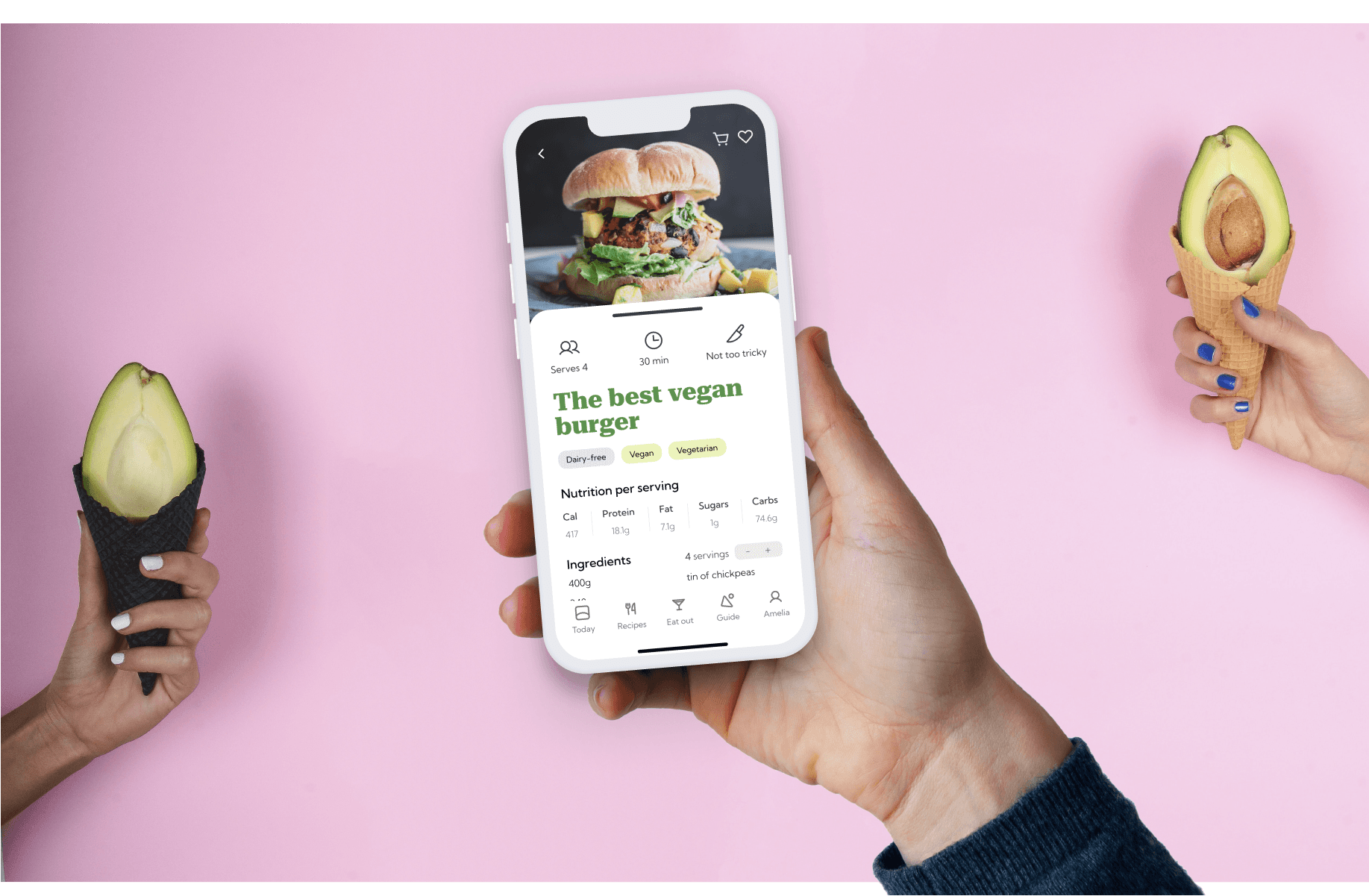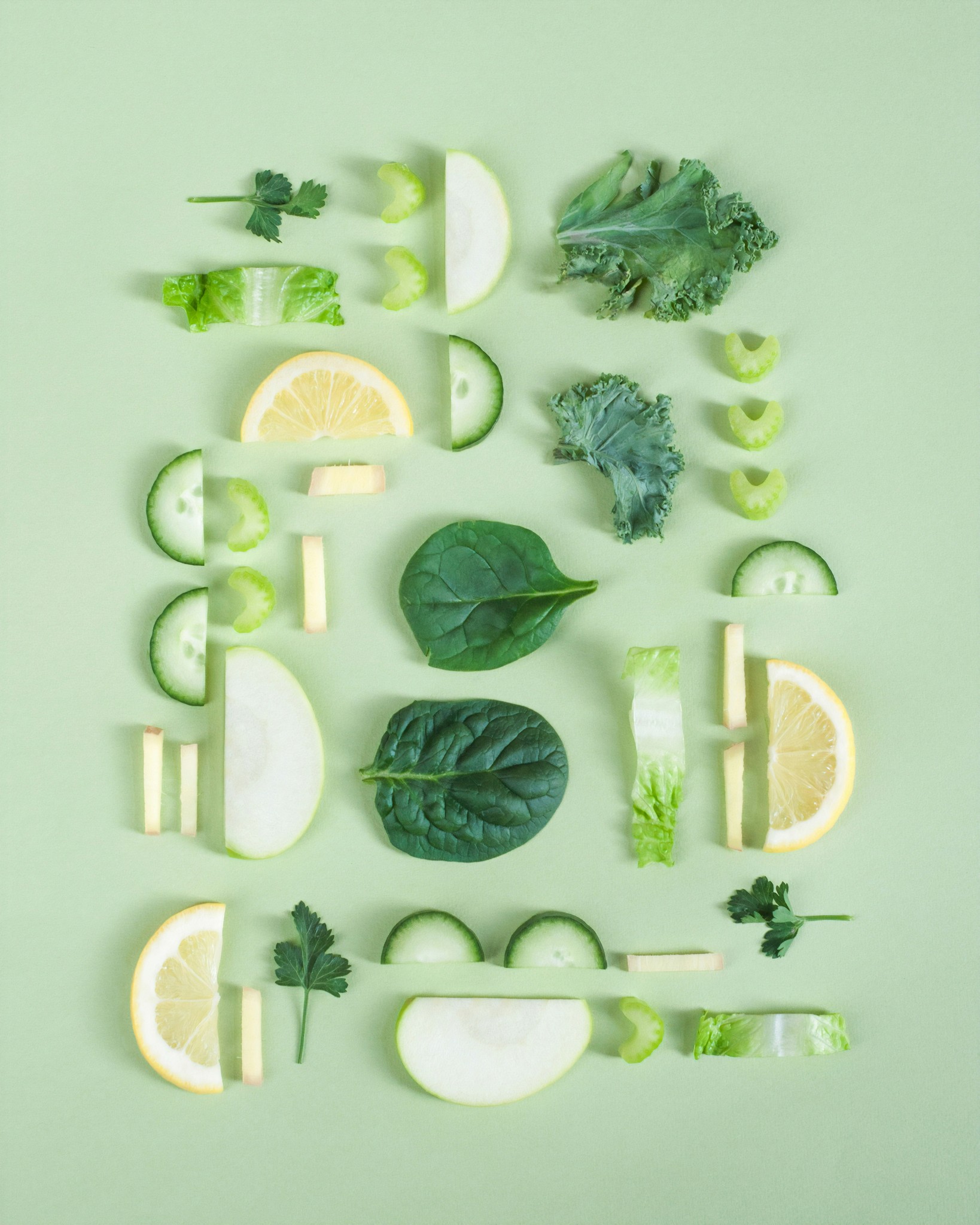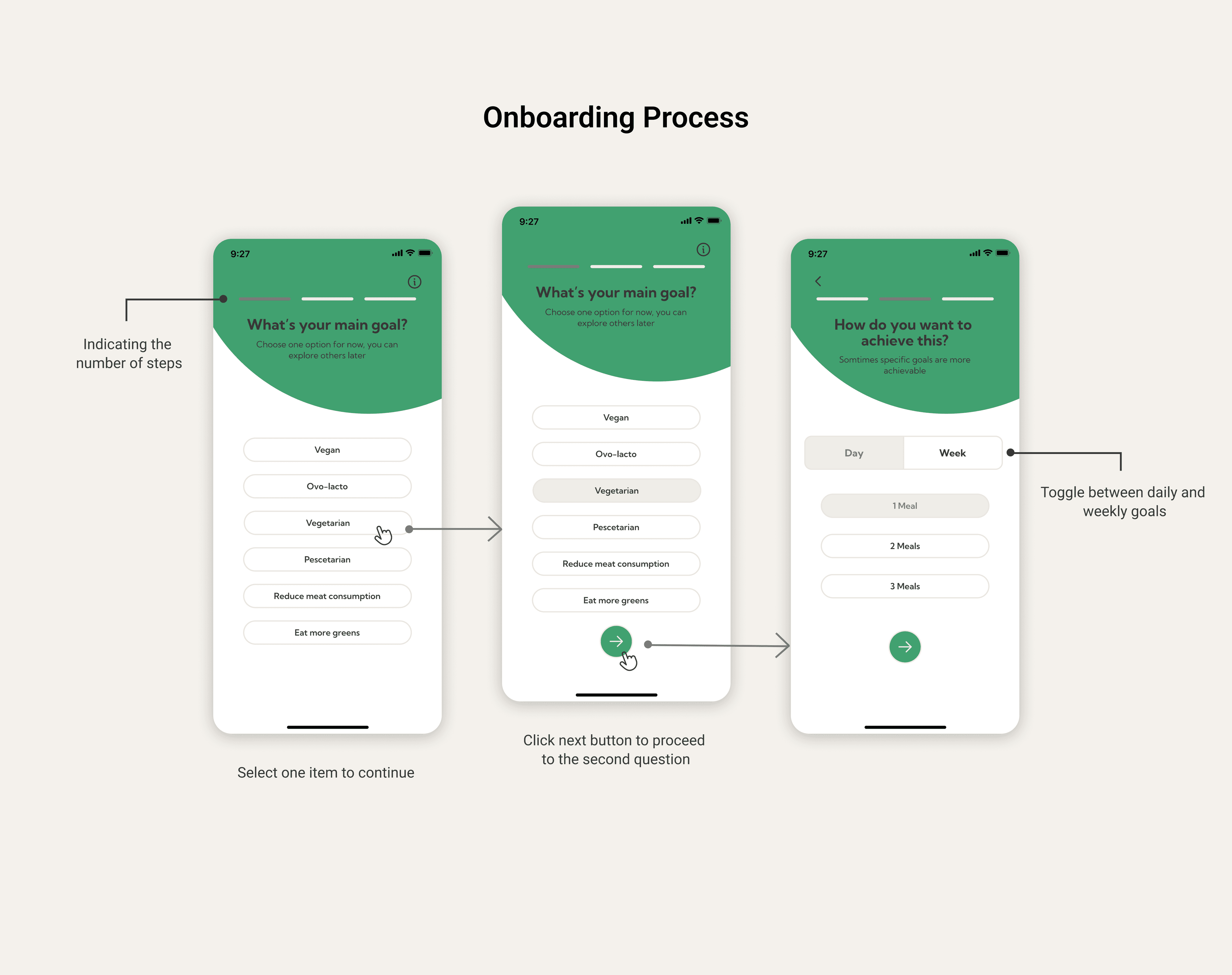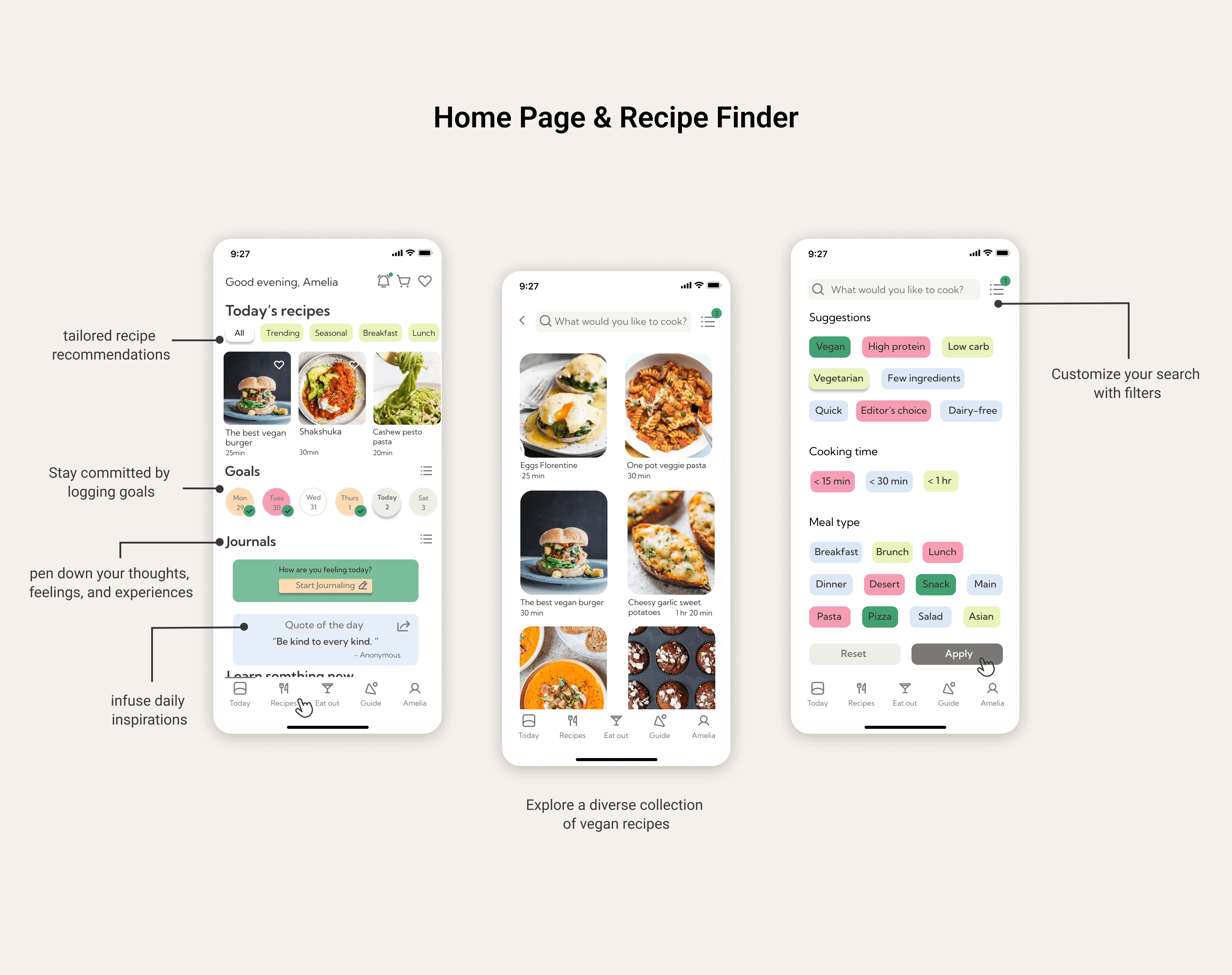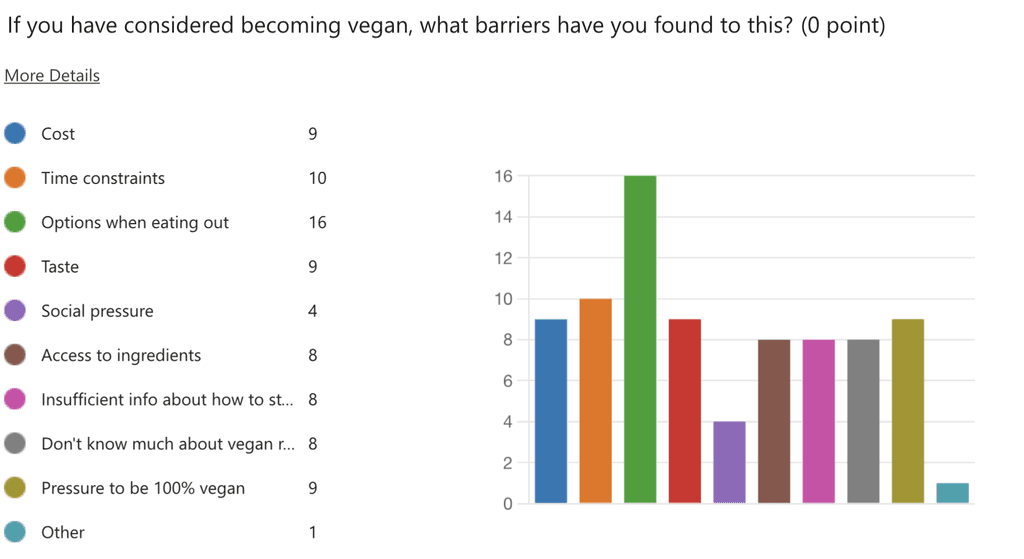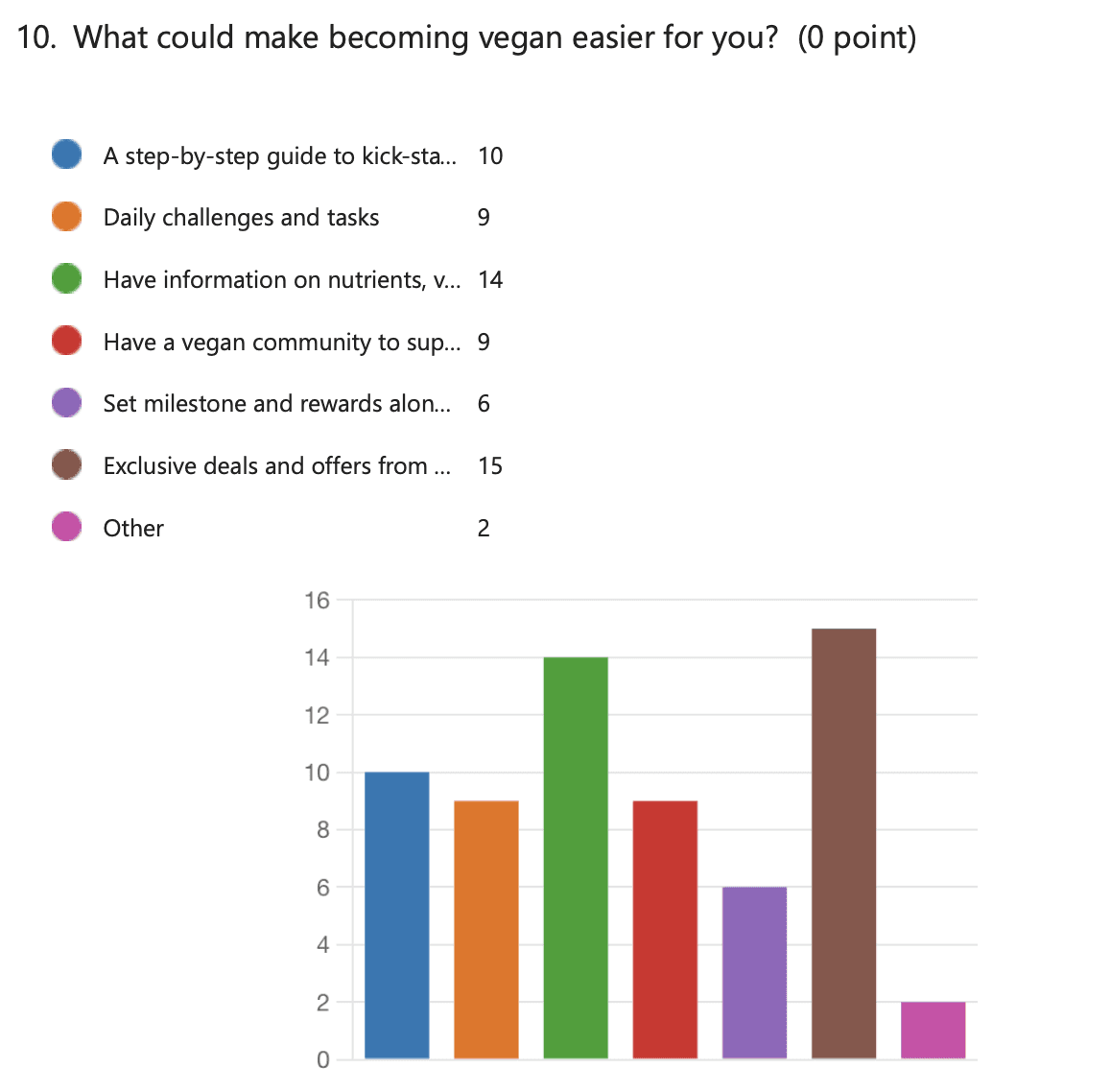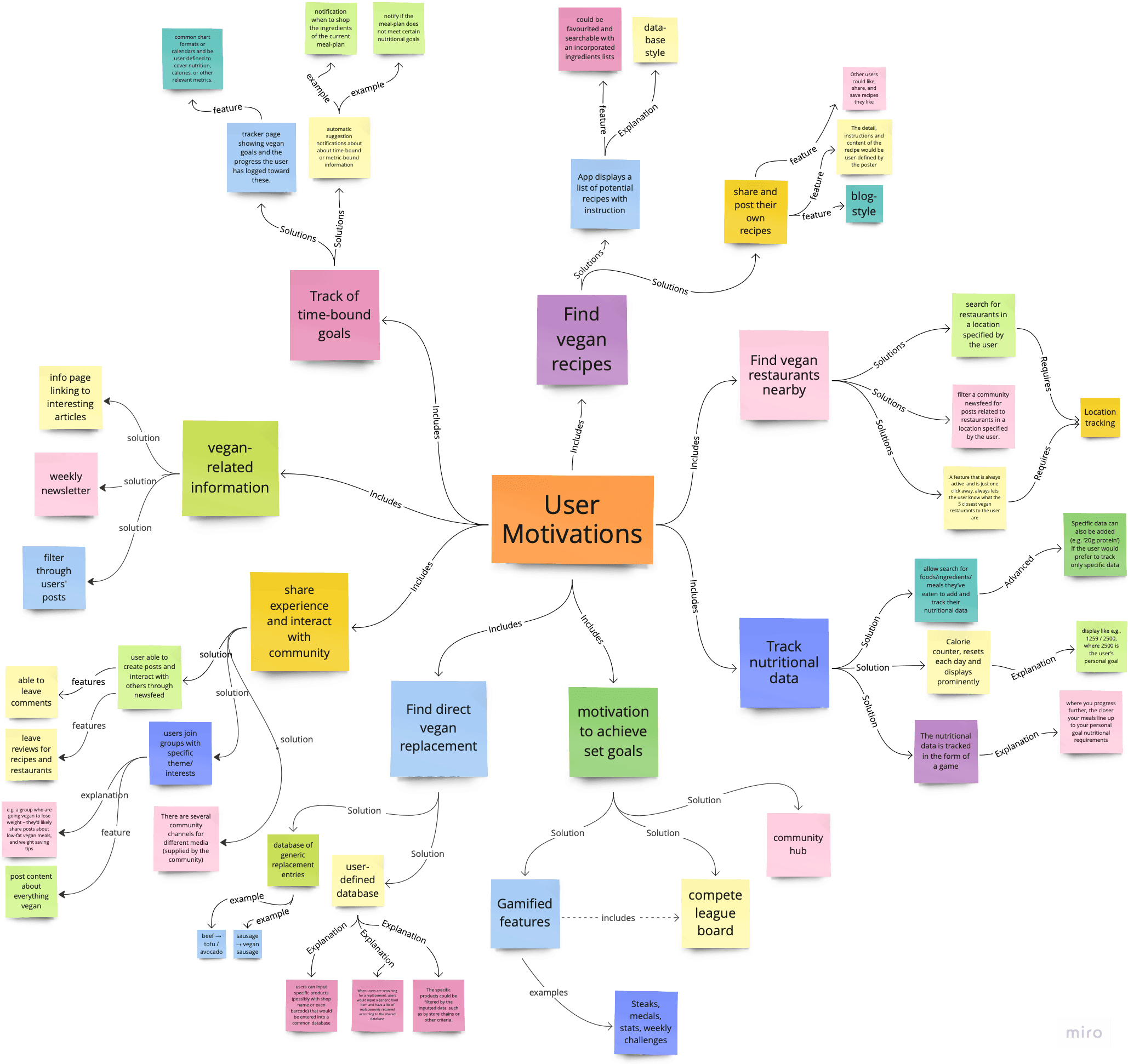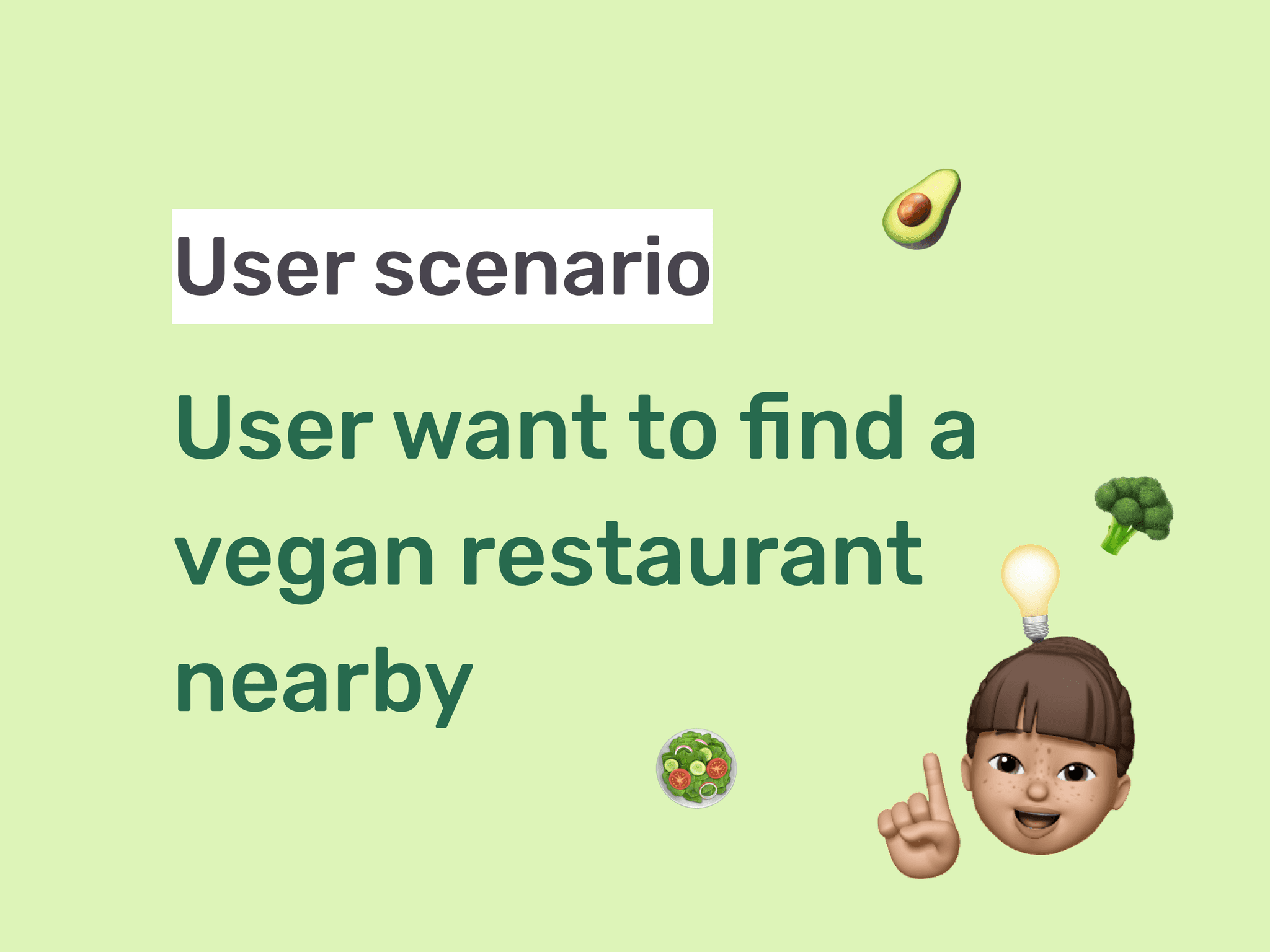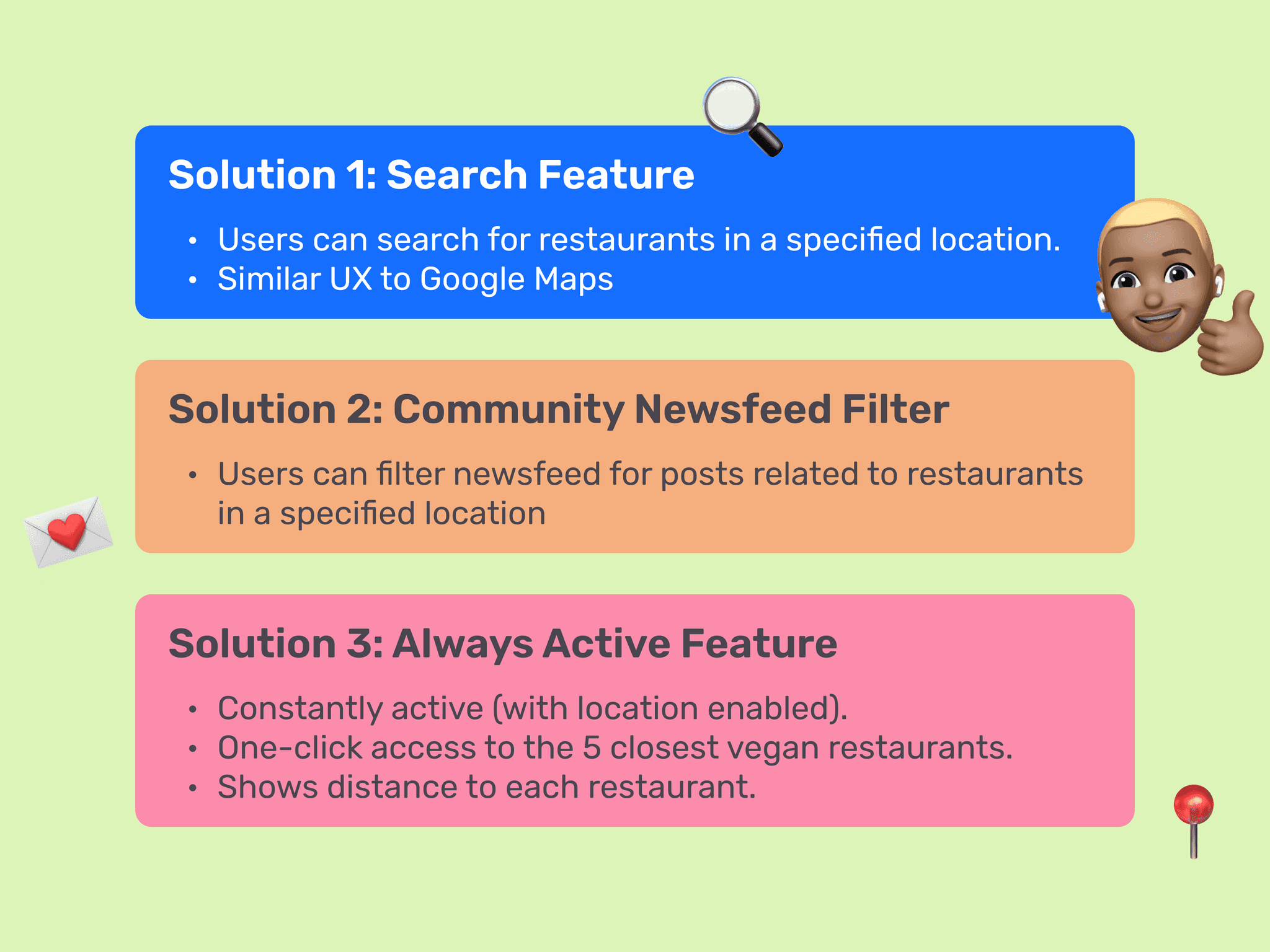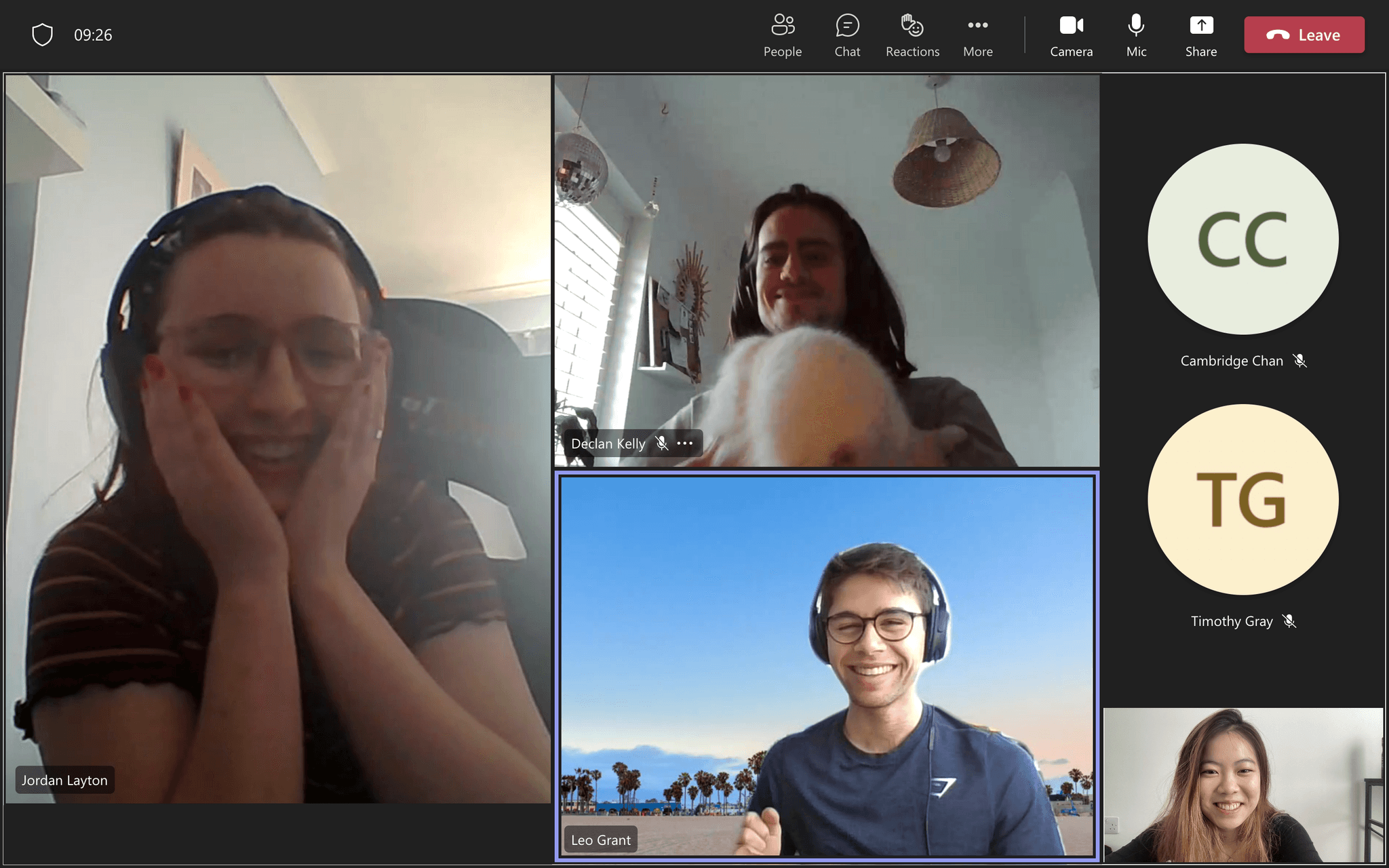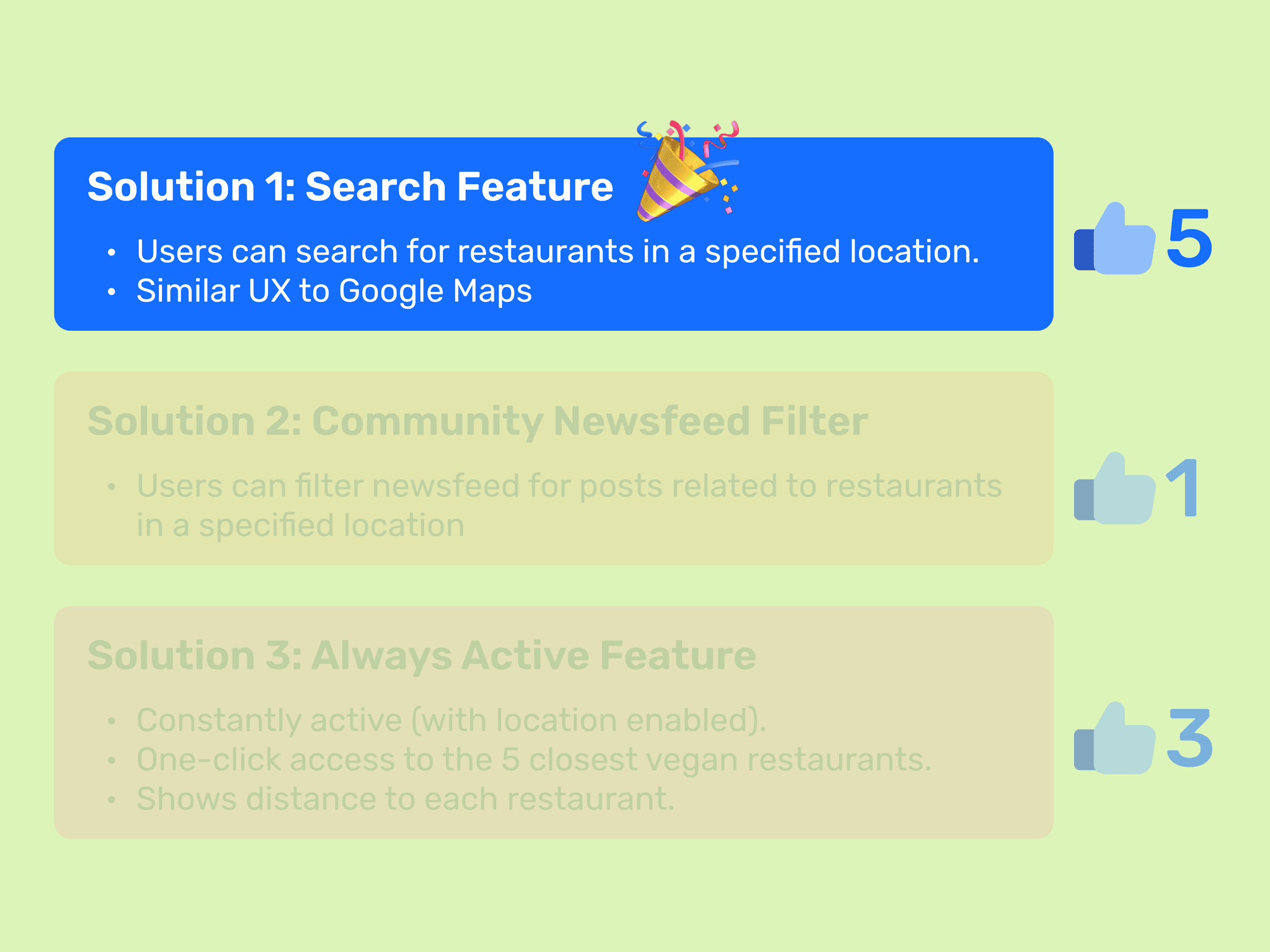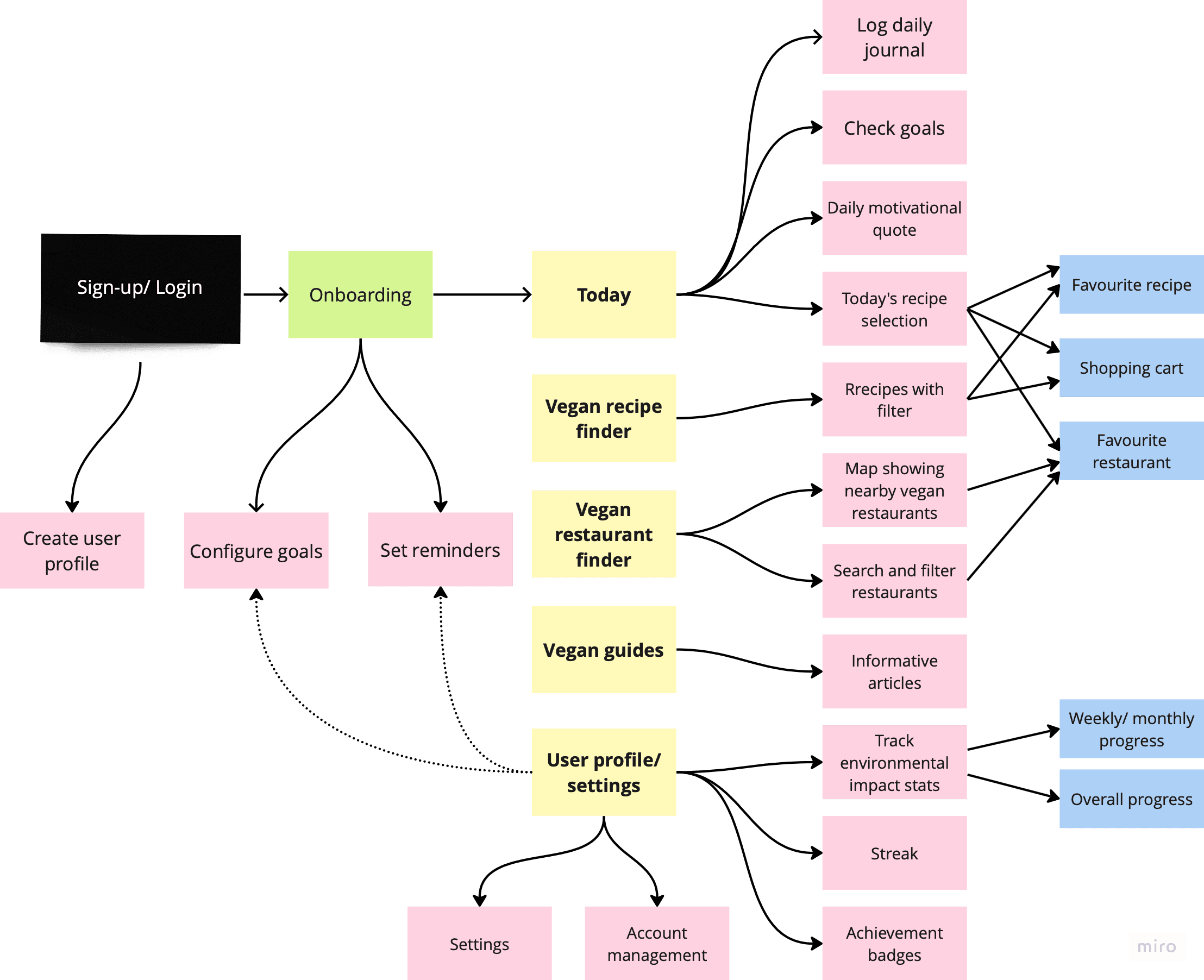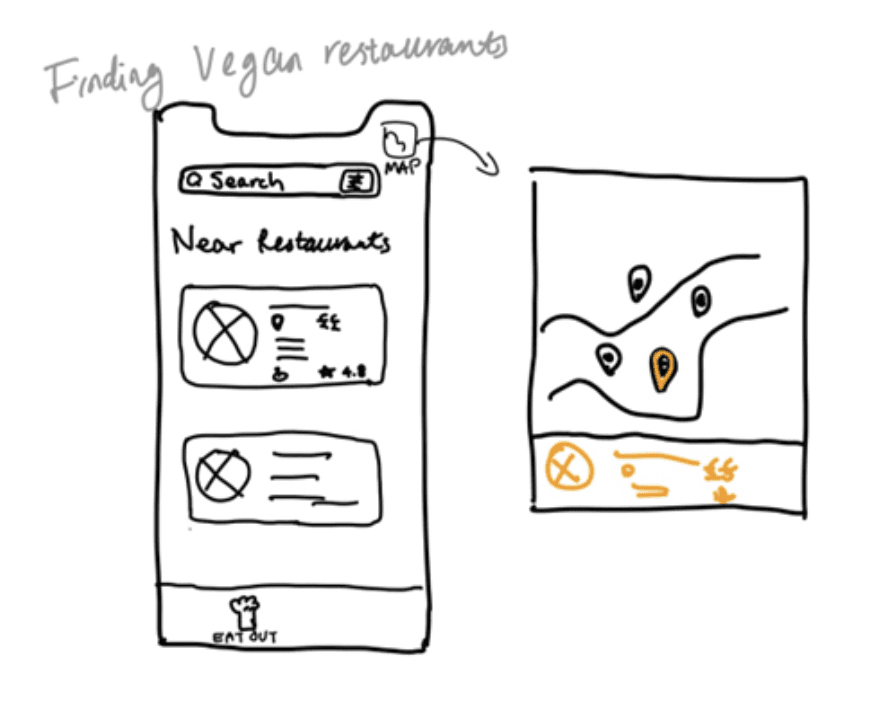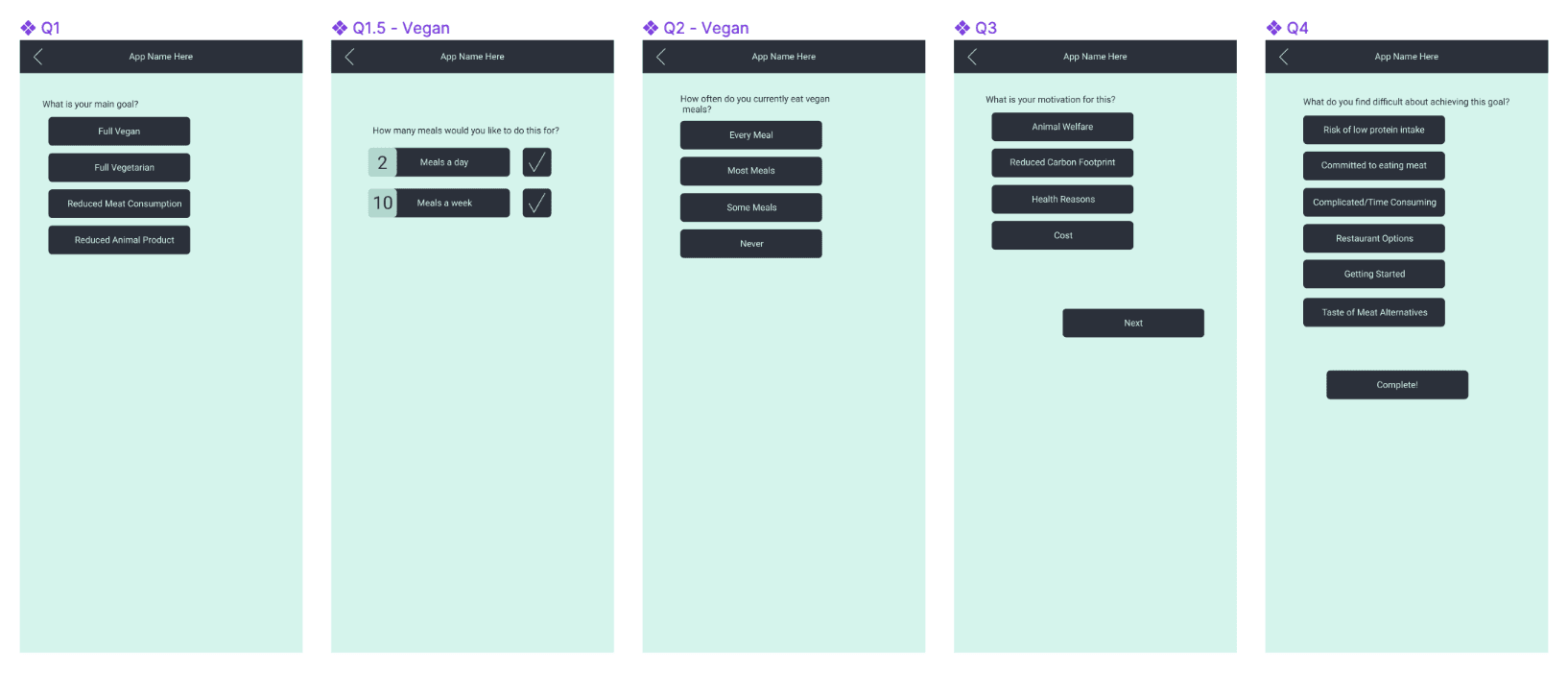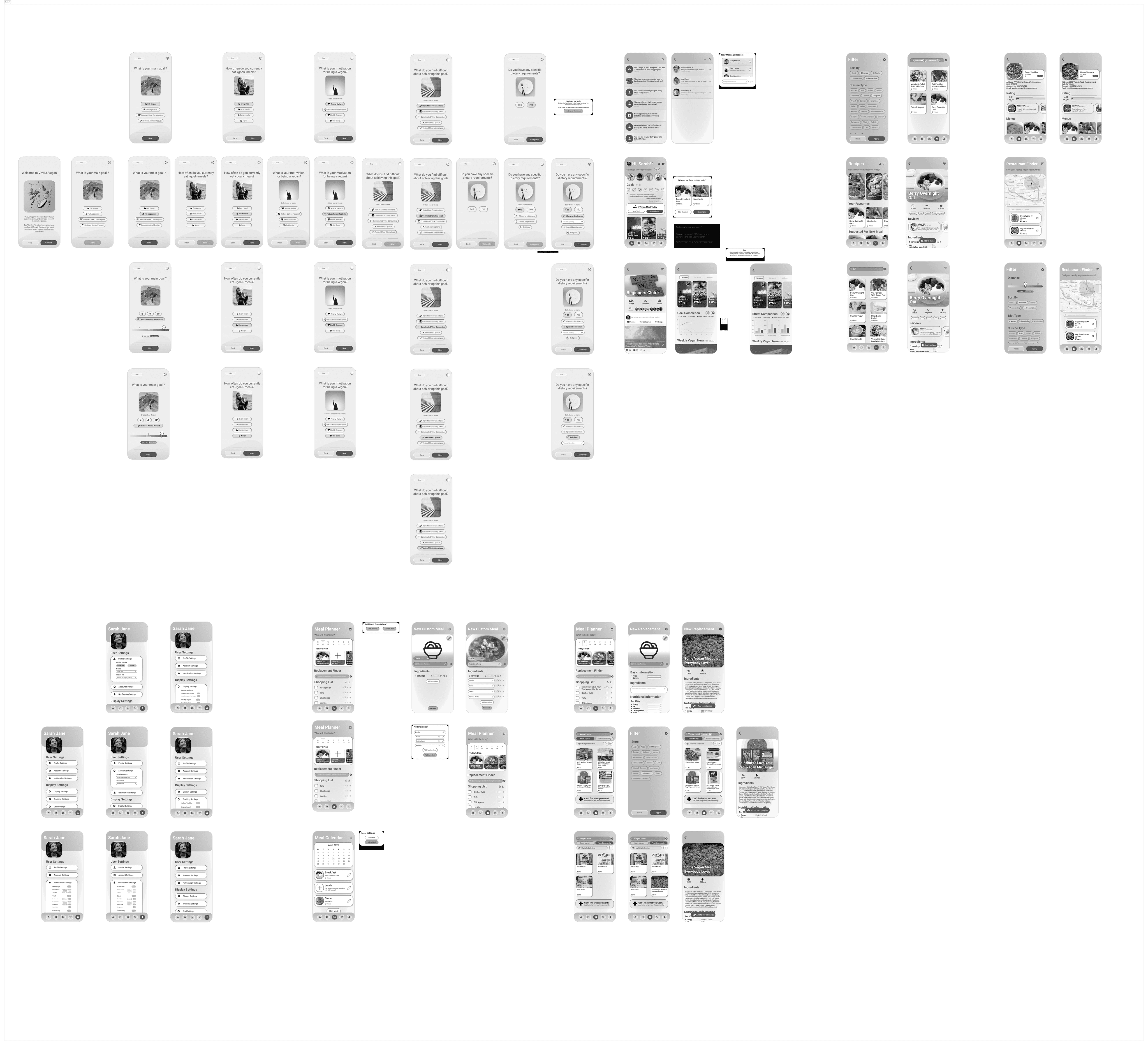Projects/ Veego
Overview
In my final year at university, I designed Veego, a fun and user-friendly app that helps people transition to a vegan diet. Through research, brainstorming, and user testing, we created an engaging tool that makes plant-based eating easy and exciting. Join the journey towards a greener lifestyle with Veego!
Role: Lead UI/UX designer
Timeline: Feb - Apr 2022
Deliverables: product ux/ui
Problem 🐣
Overview
How might we…
Solution 💎
Your vegan adventure begins here! Our tailored onboarding survey crafts the perfect app experience to match your dietary goals and meal preferences effortlessly
Unleash your vegan culinary adventure: Find perfect plant-based recipes suited to your dietary preferences and schedule
Unlock the ultimate vegan knowledge hub, and track your impact and celebrate your journey towards a greener future
Define ✍🏼
Secondary research
Literature Review: Key factors for sustained behavioral change are ability, motivation, and opportunity.
Competitor Analysis: Evaluated strengths and weaknesses of eight dietary apps.
Key Findings:
Successful apps use self-monitoring, visual feedback, competition, and social comparison.
Few apps offer nutrition tracking or food replacement guidance.
Common features include recipe collections but lack comprehensive dietary support.
User interviews
User Surveys (n = 86)
Explored user experiences, goals, and challenges in reducing meat consumption.
Key insights
77%
want to try veganism in small doses
41%
believe enjoyment of eating meat/ cheese to be the biggest barrier
> 50%
indicated having exclusive deals and offers from health food stores and restaurants would make the transition easier.
Semi-structured Interviews (n = 7)
Based off our survey and interview results, we identified six major barriers that the app need to address.
Enjoyment and commitment to eating meat
Lack of knowledge in preping vegan meals
Limited vegan options in restaurants
Concerns over cost, time, and efforts
Taste of vegan meal easily becomes boring and tasteless
Limited and scattered sources of information
Turn into…
Personalised Goals
Users can set and adjust their individual dietary goals.
Comprehensive Information
Provide users with vegan recipes, meat alternatives, and dining options.
Interactive Visualizations
Users can track their progress and interact with their goals.
User-Friendly Design
Ensure the app is mobile-based, intuitive, and enjoyable to use.
Primary
Bella
Age: 27
Occupation: Sales Assistant
Bio: She is a pro-environmental activist. She always prefers to cook/order a vegan/vegetarian meal when she can.
Goal: She wishes to be part of the vegan community for environmental concerns
Needs: Suggestions for common vegan replacementsStep-by-step recipe for vegan meals Find nearby vegan restaurants with good ratings
Secondary
Noah
Age: 19
Occupation: Sports Science Student
Bio: He strictly follows a vegan diet, and only go to restaurants with nice vegan dishes. He usually cooks at home during weekdays and hang out with friends at weekends.
Goal: He wishes to have something to make his life as a vegan easier.
Needs: Information on nutrition and how to cook a balanced vegan meal Keep track of his macronutrient ratio goalsSuggestion for vegan-friendly restaurantsInspiration for vegan recipes
Supplementary
Emma
Age: 55
Occupation: Retired
Bio: She take gym class regularly but her age has inevitably brought heigthened risks for various health conditions (e.g. high blood pressure).
Goal: She wishes to change her eating habits to stay healthy.
Needs:
Age specific educational articles
Keep track of her nutritional goals based on age
Recipes for vegan meals
Find nearby vegan restaurants
User scenarios
Based on the user persona, eight user scenarios/motivation were created. For example, a user motivation could be "the user wants to find vegan restaurants nearby".
For each scenario, multiple solutions were proposed. Participants ranked solutions for each scenario, providing valuable feedback. (See below for detailed process).
Goal: To identify concrete features with high feasibility and usability.
01 Create user scenarios
Developed eight scenarios based on user personas and motivations.
E.g., "User wants to find nearby vegan restaurants."
02 Generate solutions
Generated multiple solutions for each scenario.
E.g., Restaurant finder with search feature
03 Rank and evaluate solutions
Conducted interviews with potential users.
Asked participants to rank solutions for each scenario.
Recorded additional comments and preferences
04 Select optimal solutions
Kept the most voted solutions (after design considerations) for each scenario.
Refined solutions based on participant feedback.
Develop 👩🏼💻
User flow
Concept sketches for early testing
Restaurant finder
Notification
Onboarding
Notable feedback:
The jargon of diet types during onboarding (e.g. ovo-lacto, pescatarian) a bit confusing
Wish to have the option to skip onboarding and goal setting and then come back to it later at their convenience
Restaurant finder feature well-liked
Wireframes
Usability testing
We conducted think-aloud and task-based usability tests with seven potential users to assess:
Usability: How easily can users complete key tasks?
Engagement: Are users motivated to use the app regularly?
Behavioural Change: Does the app support dietary changes?
Key insights
Usability and Visual Design:
Participants found the prototype easy to use, comprehensive, and visually appealing.
Navigation was intuitive and frictionless.
Layout and readability were well-received, making key features stand out.
Opportunity for Engagement:
Gamification elements like streaks and achievement badges were motivating.
Users anticipated new badges and challenges, suggesting high engagement potential.
Potential for Behavioral Change:
Veego effectively addressed barriers to dietary change.
Users felt the app boosted their self-efficacy and eco-friendly eating habits.
Features like daily journals, feedback, and goal-setting were appreciated for promoting awareness and habit formation.
Deliver 📦
Final design
After extensive research, brainstorming, and user feedback, we refined our initial concepts into a high fidelity design that truly meets the needs of our users. Here’s how we brought Veego to life:
Onboarding survey
A set of questions regarding users' goals and motivations. Veego will generate goals that feel more personal, as well as customised recipes and restaurant recommendations based on survey results.
Browse and save recipes
Explore a world of personalised plant-based delights with Veego's Recipe feature. Save favourites, cook confidently, and embrace diverse vegan cuisines for an inspiring kitchen journey.
Goal tracking
Choose daily vegan goals, track progress, and stay committed.
Find recipe and add to cart
Save time and find recipes based on cooking time, nutrition, meal type, etc. Easily add ingredients to your shopping cart, simplifying your grocery experience. Happy cooking!
Find restaurants
Tailor your search to find the perfect vegan dining spot. Save your favourite restaurants for easy access.
Browse vegan guides
Discover comprehensive Vegan Guides with Veego. Access essential insights, tips, and advice for a smooth plant-based transition
User profile and settings
Elevate your vegan journey with Veego's Profile Page! Track impactful stats, maintain streaks, unlock achievement badges, and customise settings for a personalised experience
Takeaways 💭
✨ The best design comes from collaboration
It was amazing to see how each person was able to bring to the table a different perspective during the brainstorming and sketching sessions. The diversity of ideas means we could mix and match to produce an optimal solution that is both feasible and creative based on the requirements set forth.
✨ When in doubt, go back to user insights
There were several times during the design process when we have doubts about deciding among several possible directions to move forward. And what helped us the most was referring back to our user goals and pain points, questionnaire results, and quotes from user interviews, in this way we not only remembered our design requirements, but also why we created them in the first place.
✨ Focus on the problem
Thoroughly assessing user needs is vital to building an effective product, at the end of the day, it is your users pains that you will be solving for so keeping that front of mind is important.
✨ Visual matters, a lot
Feedback from users suggested that aesthetics play a large role in perceived usability and system trustworthiness.
